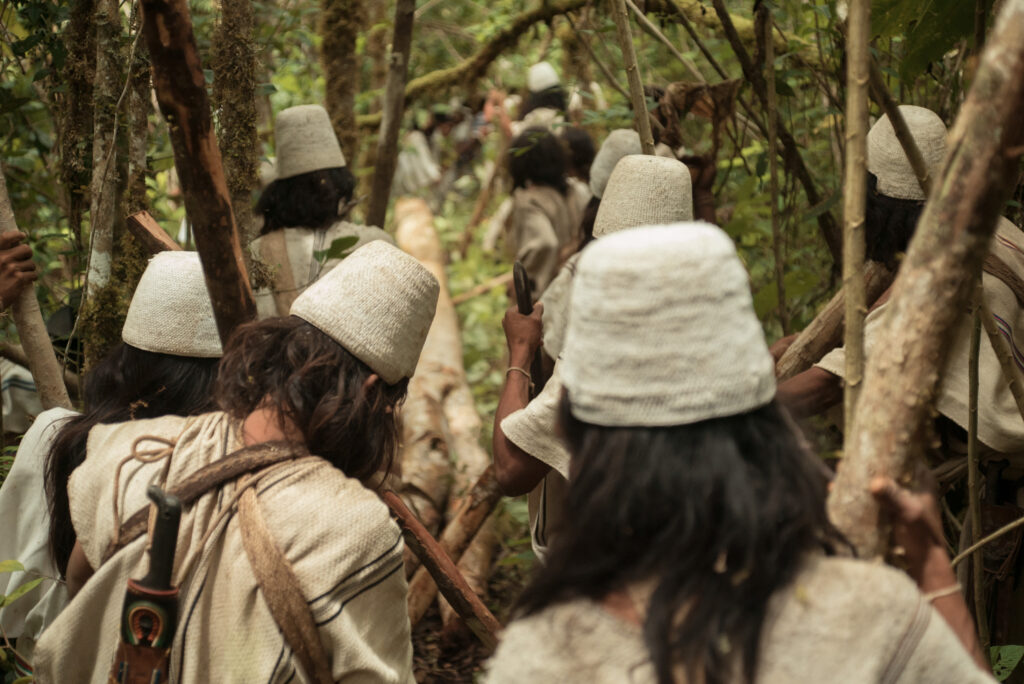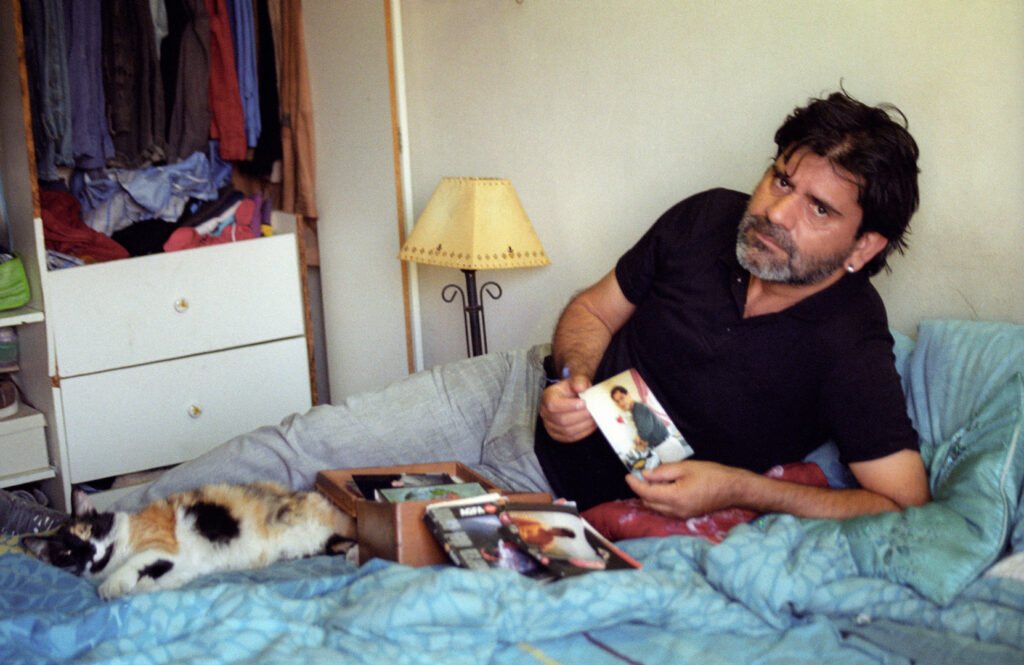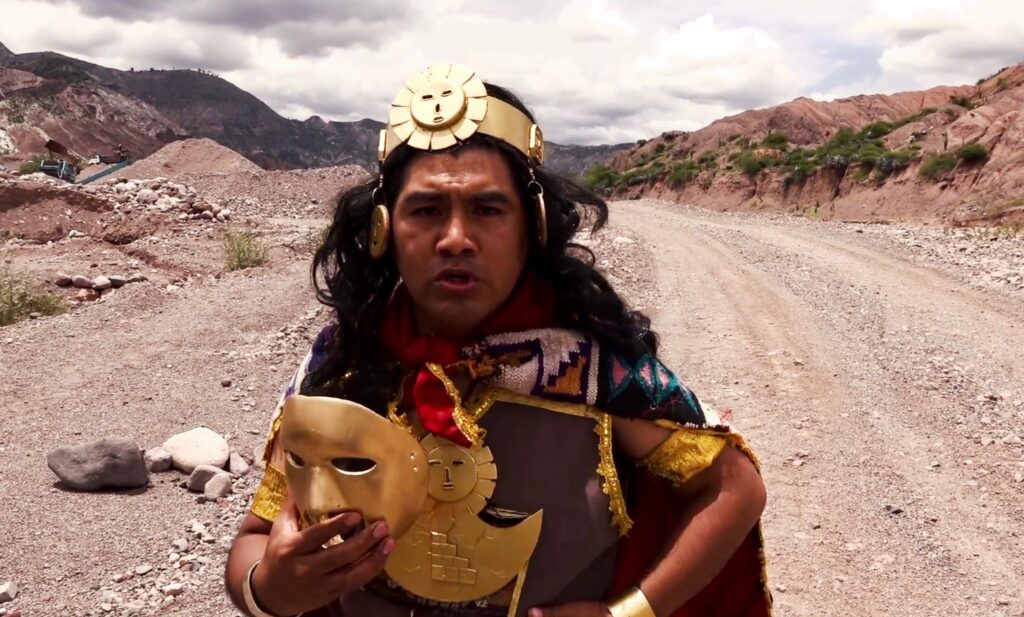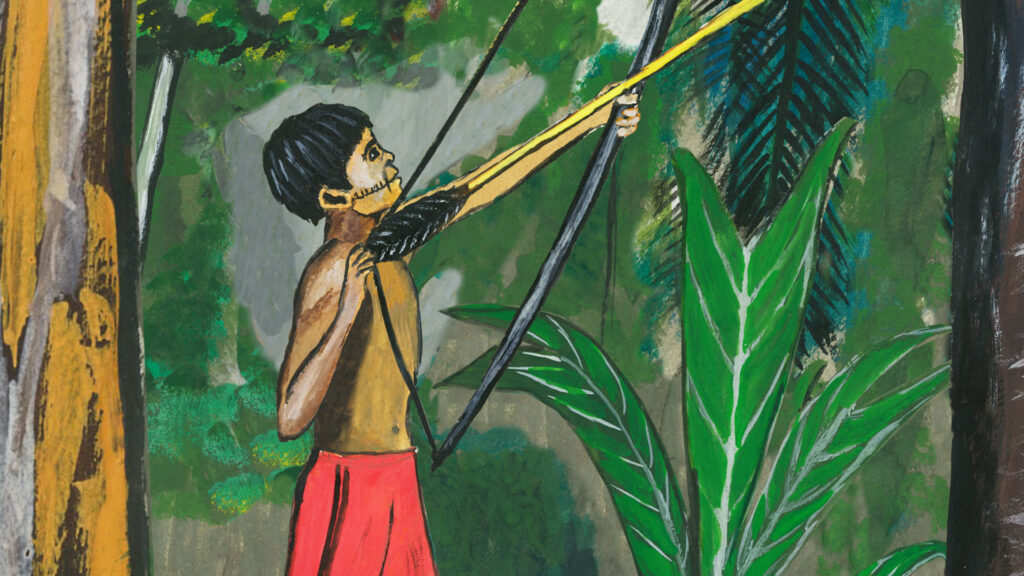From the Andean highlands to the Amazon basin and down to Chile, there is a particular rich selection of films from Latin America this year’s RAI Film Festival. Festival Reporter Kamila Kordys discovers that filmmakers in the region are pioneering collaborative approaches that put participants’ voices at the heart of their work, and recommends four to watch.
THINKING LIKE A MOUNTAIN

What’s it about?
Thinking Like a Mountain takes us on a journey through the forest and the ice of Colombia’s highest peak, Sierra Nevada de Santa Marta, home to the indigenous Arhuacos. This community draws a singular spirituality from this spectacular environment, in which they have purposely isolated themselves. Balance and order is central to their culture. Yet, as we see in this mesmerising portrait of a place and people, traditional ways of life are threatened by prolonged civil conflict, mining operations, and climate change.
Who made it?
German-born filmmaker Alexander Hick, who gained unparalleled and unprecedented access to this community to make this film. Thinking Like a Mountain builds on Hick’s previous visual essays that also consider how places and their peoples – in Atl Tlachinolli (2015) he cast his eye on Mexico City, and San Agustín: Marea baja en el mar del plástico (2012) on a farming community in Andalucía.
What’s special about it?
Thinking Like a Mountain is a visually dazzling film with sophisticated things to say about a singular environment and community. Hick illuminates Arhuaco cosmology and their beautiful landscapes, but also the shifting political contexts on the borders of their lands. Whilst this community does not seem to have changed for centuries, we learn the survival of its traditional way of life has been hard won.
Thinking Like a Mountain screens on Thu 28 March at 11:00 at Watershed. Buy your tickets here.
THIS IS MY FACE

What’s it about?
In Chile, people living with HIV are stigmatised, and they often conceal their condition and remain silent about what they are going through. In This is My Face, several men open up about their experiences. It follows a creative process whereby these men produce photographic portraits that represent their (often painful) memories and feelings, a process which helps them challenge years of silence, shame, and misrepresentation.
Who made it?
Whilst Angélica Cabezas Pino is credited as director, This is My Face is the result of path-breaking collaboration between the filmmaker/researcher and the men we meet in the film. With a background in both visual art and anthropology, Cabezas Pino works at the intersection between the disciplines, using visual communication and expression as a means for illuminating her research areas. This is My Face emerged out of her practice-based PhD in Anthropology, Media and Performance at the University of Manchester.
What’s special about it?
This is My Face demonstrates the power and possibility of collaborative storytelling. HIV-related stigma is one of the major barriers to fighting HIV in Latin America and it often prevents people from accessing testing and treatment. Cabezas Pino’s approach reveals an internal and hidden dialogue, revealing a hitherto obscured lifeworld. We see the profound effects of the project written on the faces of the men in her film as they reveal themselves, with pride and determination.
This is My Face screens on Thu 28 march at 11:15 at Watershed, as part of Student Programme 4. Buy your tickets here.
HORROR IN THE ANDES

What’s it about?
Horror in the Andes is a film about three friends making a horror movie in Ayacucho in the Peruvian Andes.
Who made it?
Anthropologist Martha-Cecilia Dietrich, who utilises participatory and collaborative filmmaking methods as part of her work. Currently teaching at University of Bern, her previous research has examined ways of remembering the internal conflict in Peru and generated the documentary Between Memories (2015) (distributed by the RAI)
What’s special about it?
Balancing insight with warm humour, Horror in the Andes shows how indigenous filmmakers can appropriate foreign genres to tell their own stories. The filmmakers we meet use horror as a means to interrogate contemporary social issues, and confront the legacies of colonial violence. Furthermore, Horror in the Andes shows how translating foreign modes into local terms can articulate notions of Andean identity with defiant confidence.
Horror in the Andes screens in a double bill with Zahida on Thu 28 March at 9:15 at Watershed. Buy your ticket here.
AMAZONIMATIONS

What’s it about?
Amazonimations is a compilation of three animated films written, voiced and illustrated by the Matses people of the Amazon rainforest, on the Peru-Brazil border. They tell of their expert use of poisonous frogs, young adults’ experiences of moving to the city, and children’s observations of the animals that they share the forest with.
Who made it?
Anthropologist Camilla Morelli and animator Sophie Marsh collaborated with different generations of Matses people to create Amazonimations. Based at University of Bristol, Morelli has worked with Matses people since 2010, specifically with children and young people. Her research uses visual methods to examine social change. Sophie is a professional animator and film producer; a part of this project, she has been teaching stop-motion animation to Matses children in the rainforest.
What’s special about it?
These films are small gems bursting with insight, rendered with charming visuals. Most importantly, they let the true voice sof the Matses people sing out to the wider world. Amazonimations demonstrates how collaborative visual methods can help us understand radical processes of social change that are affecting people in Amazonia and beyond, to create a space where young Amazonians can discuss their everyday lives. The project promotes inclusion, and participants are involved as active agents in the production of knowledge.
Amazonimations screens on Saturday 30 March as part of Shorts Programme 2. Public tickets are sold out for this screening, but you can get in by getting a Festival Pass.
In addition to these Latin gems, don’t miss: After the Silence (dir. Natalie Cubides Brady) about the impact forced disappearances in Colombia, Fire Mouth (dir. Luciano Pérez Fernández), a striking portrait of a football match in scorching Brazil, Pasajuego (Daniel Oliveras de Ita), a study of the ballgame Pelota Mixteca as played amongst the Oaxacan diaspora, and our Queer Brazil! programme.
You can see all these riches from Latin America, as well as all other screenings, events and conference sessions, with our great value Festival Passes.